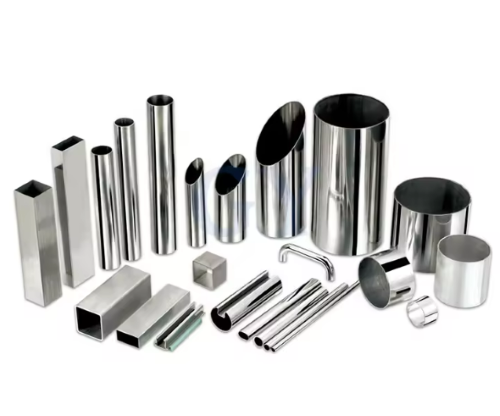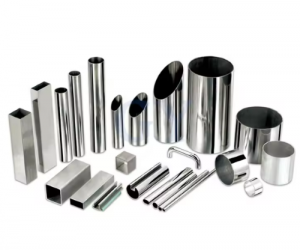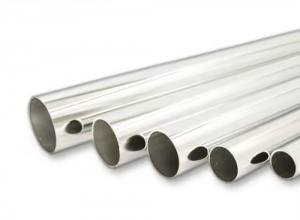Refractory Metal Tubing: Types and Applications

Introduction
Refractory metals stand out for their exceptional qualities, including remarkable resistance to heat, wear, and corrosion. These characteristics make refractory metal tubing an invaluable component in various high-temperature, high-stress environments.
This article discusses the types of refractory metal tubing, and their applications. Hope that you can learn about their features and demand.

Understanding Refractory Metals
Refractory metals are notable for their extraordinarily high melting points, typically over 2000°C (3632°F). So, they have become the materials of choice for applications that operate under intense heat. The most commonly recognized members of this group include tungsten, molybdenum, tantalum, niobium, and rhenium. These metals not only boast high melting points but also exhibit superior strength at elevated temperatures, remarkable hardness, and significant heat and corrosion resistance.

Types of Refractory Metal Tubing
The most common types of refractory metals used for tubing include:
- Tungsten Tubing: It is known for its exceptional high-temperature strength and melting point (3422°C). So, this refractory metal tubing is used in environments with extreme heat, such as in aerospace for rocket engine nozzles, in lighting for filament supports, and in electronics for electrodes.
- Molybdenum Tubing: Molybdenum tubing comes with a slightly lower melting point than tungsten (2623°C). It also offers excellent heat resistance and strength at elevated temperatures. It's also crucial in furnace applications, electronics for semiconductor manufacturing, and components in high-temperature thermal systems.
- Tantalum Tubing: Tantalum is highly corrosion-resistant and biocompatible. Therefore, such refractory metal tubing is suitable for chemical processing equipment, medical implants, and surgical tools. It has a melting point of 3017°C and is particularly resistant to acids.
- Niobium Tubing: Niobium tubing is corrosion-resistant and has a melting point of 2477°C. It's used in aerospace components, nuclear reactors, and electronics, particularly in capacitors and superconductors.
- Rhenium Tubing: This refractory metal tubing has one of the highest melting points of all metals (3186°C) and is extremely resistant to wear and heat. It's often alloyed with other refractory metals to improve their properties and finds use in high-temperature turbine engines, electrical contacts, and filaments.
- Alloyed Tubing: Often, alloyed refractory metals come with increasing their ductility, improving corrosion resistance, or enhancing strength at high temperatures.
- For instance, the Tungsten-Rhenium (W-Re) alloy is specifically designed for use in thermocouples and electrical contacts thanks to its improved electrical properties.
- The Molybdenum-Rhenium (Mo-Re) alloy is notable for its increased ductility and strength, so it is suitable for applications in the aerospace and defense industries.
- With exceptional superconducting properties, the Niobium-Titanium (Nb-Ti) alloys have become critical component in the construction of superconducting magnets.
Each type of refractory metal tubing (see Table 1) serves distinct industries and applications. Yet, the choice of material depends on the required resistance to heat, corrosion, and wear, as well as the specific environmental conditions it will face.
Table 1. Different Refractory Metal Tubing
| Refractory Metal Tubing | Melting Point (°C) | Key Properties | Common Applications |
| Tungsten Tubing | 3422 | Exceptional high-temperature strength | Aerospace (rocket engine nozzles), lighting (filament supports), electronics (electrodes) |
| Rhenium Tubing | 3186 | Extremely resistant to wear and thermal shock | High-temperature turbine engines, electrical contacts, filaments |
| Tantalum Tubing | 3017 | Highly corrosion-resistant and biocompatible | Chemical processing equipment, medical implants, surgical tools |
| Molybdenum Tubing | 2623 | Excellent heat resistance and strength at elevated temperatures | Furnace applications, electronics, high-temperature thermal systems |
| Niobium Tubing | 2477 | Corrosion-resistant, similar to tantalum | Aerospace components, nuclear reactors, electronics (capacitors, superconductors) |
| Alloyed Tubing (Examples) | Varies | Improved properties such as ductility, corrosion resistance, or strength at high temperatures | W-Re: Thermocouples, electrical contacts; Mo-Re: Aerospace, defense; Nb-Ti: Superconducting magnets |
Applications of Refractory Metal Tubing
Refractory metal tubing finds critical applications across industries. Let's explore some of the key uses:
- Aerospace: Jet Engines and Rocket Nozzles
Tungsten and molybdenum tubing are integral components in the manufacturing of jet engines and rocket nozzles. These devices can withstand extreme temperatures and corrosive conditions. For example, the nozzles of the Space Shuttle's main engine were made using refractory metals to handle the high heat generated during launch.
- Medical: Orthopedic and Dental Implants
Tantalum's excellent biocompatibility and corrosion resistance make it a preferred material for orthopedic implants. You can find these components in bone screws and dental implants. Its porous form can be used to create scaffolds that encourage bone growth.
- Chemical Processing: Corrosive Substance Handling
The chemical processing industry relies on refractory metal tubing for the safe transport and containment of highly corrosive substances. Tantalum tubes find use in heat exchangers and reaction vessels due to their unparalleled resistance to acid attacks.
- Electronics: Capacitors and Electrical Contacts
Tantalum and niobium are key materials in the production of electronic components like capacitors. Additionally, tungsten tubing is useful in electrical contacts and interconnects for its high conductivity and melting point.
- Nuclear Reactors: Fuel Cladding
Tantalum and niobium tubing serve as cladding for nuclear fuel rods. They possess corrosion resistance to nuclear fuels and byproducts, and they can operate at high temperatures.
Conclusion
In essence, refractory metal tubing is a cornerstone of innovation across numerous industries. These materials demonstrate the vast potential from enhancing the reliability of aerospace propulsion systems to advancing medical implant technologies and safeguarding nuclear reactors.
With reliable suppliers and advanced designs, the applications and demand for refractory metal tubing are set to expand. Advanced Refractory Metals (ARM) can supply you with tubes and pipes made of quality refractory metals that perfectly meet the needs of your project. Send us an inquiry if you are interested.
{{item.content}}
LEVE A REPLY
{{item.children[0].content}}
{{item.content}}






